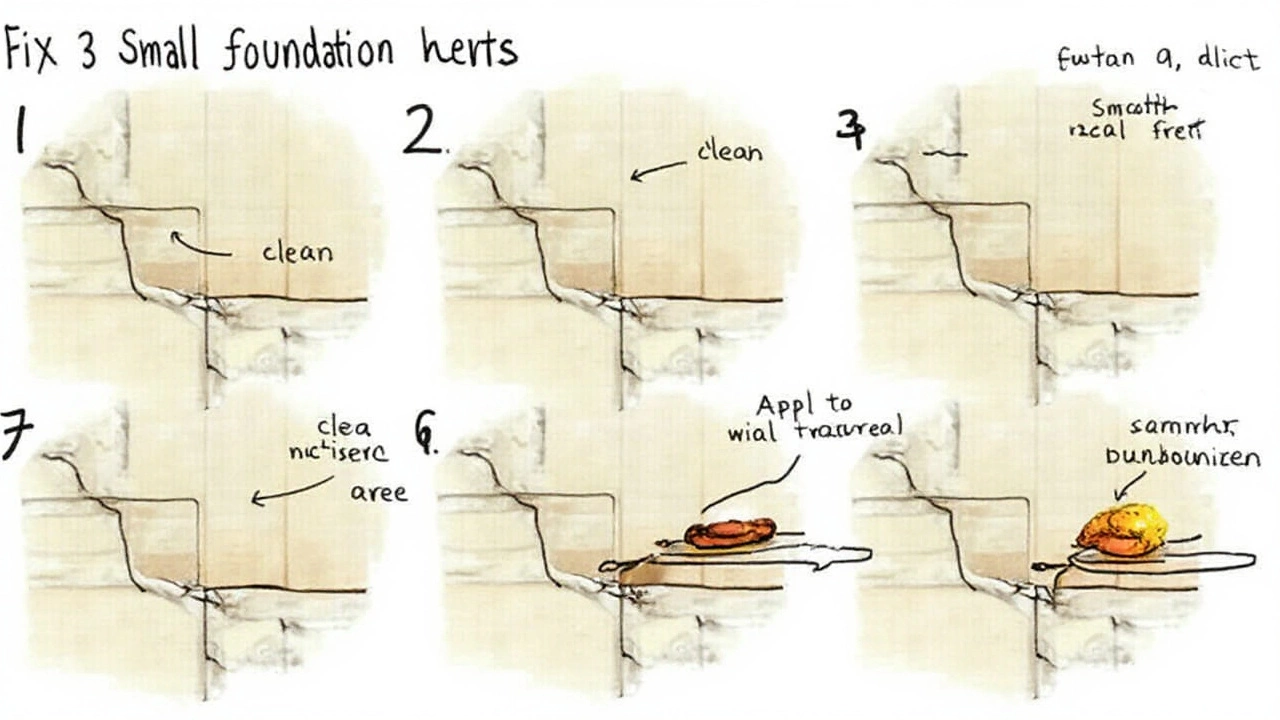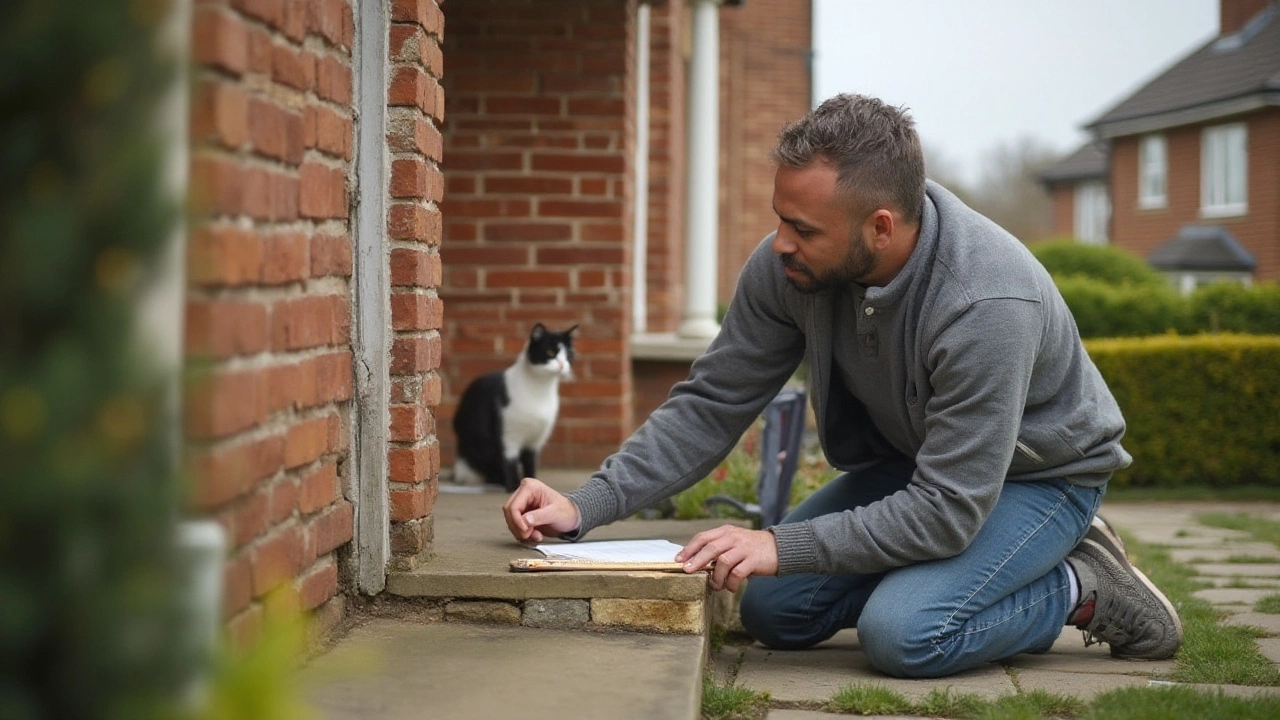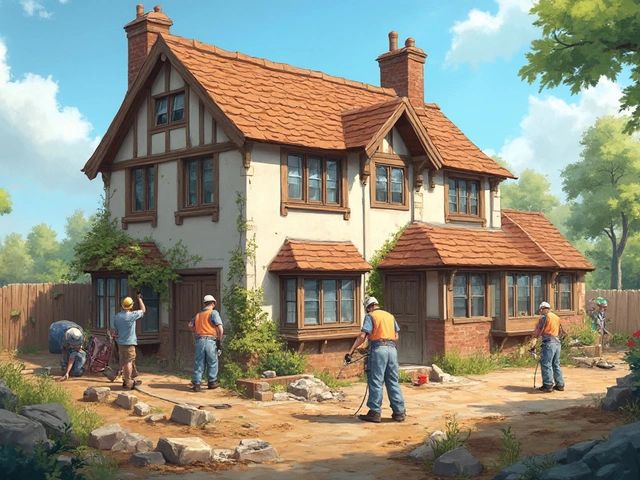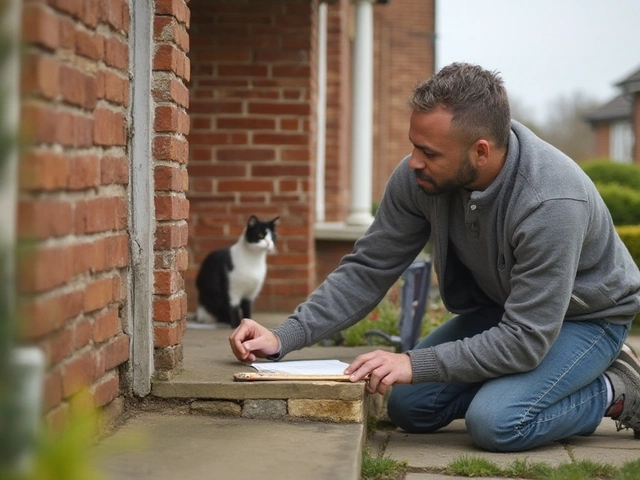Cracks in your home's foundation can be unsettling, causing concerns about structural integrity and repair costs. But can you tackle this problem on your own? This article aims to guide you through the process of determining if a foundation crack is something you can fix yourself or if it's time to bring in the professionals.
Understanding the different types of foundation cracks is crucial, as not all cracks pose a threat. Hairline cracks might just be a result of normal concrete shrinkage, while others could be signs of more significant issues. Identifying the cause and severity of the crack is the first step in deciding whether DIY repair is feasible.
If you decide to proceed with a DIY fix, it involves cleaning the crack, choosing the right repair kit, and applying the sealant appropriately. While many small cracks are manageable with the right tools and materials, priorities this task knowing when to seek professional help if the crack worsens or affects the stability of your home.
- Understanding Foundation Cracks
- Assessing the Damage
- DIY Crack Repair Steps
- When to Call a Professional
Understanding Foundation Cracks
Foundation cracks are more than just an eyesore; they can be a window into the health and stability of your home's structure. Understanding what causes these cracks and recognizing their types can save you from unnecessary worry and expense. Typically, these cracks can be classified based on their direction: vertical, horizontal, or diagonal. Vertical cracks are the most common and usually harmless, often resulting from the natural settling process of the house. In contrast, horizontal cracks might suggest more significant pressure against the wall, often due to soil expansion, and are generally a cause for concern. Diagonal cracks, which often appear at the corners of your home, can be a result of differential settlement or shifting in the ground.
Each type of crack tells a story of environmental and construction influences on your home. For instance, when a home is built on hills or in regions with expansive clay soils, the soil's expansion and contraction can lead to movement, and thus cracks, in the foundation. To evaluate risks adequately, look at the width and length. Hairline cracks can often be benign, but when they exceed a quarter of an inch, professional evaluation is recommended. This brings in the role of hydrostatic pressure. When water accumulates around the foundation, it increases the pressure on the foundation walls, potentially causing them to bow inward and crack horizontally. This can be mitigated with proper drainage systems.
Research conducted by the National Association of Homebuilders suggests that foundational issues impact a significant number of homes within two to five years after construction, with improper drainage being a leading contributor. As Ronald Lehman, a structural engineer with over 30 years of experience, once said,
"While some cracks are nothing more than cosmetic, others can signify major structural problems. Homeowners should be keen observers and not dismiss even seemingly small cracks without due attention."Always examine the foundations for signs of moisture or discoloration around a crack as these can indicate water intrusion. Seasonal changes also play a role; cold weather can cause concrete to contract and lead to cracking.
Additionally, human activities such as poor craftsmanship or the initial settlement processes can lead to cracks. When builders rush through foundation work without allowing the soil to properly settle, they're setting the stage for potential cracks. Knowing about common building codes and standard practices in your area can provide further context. There’s a fascinating aspect to consider: the century-old foundations built without modern engineering often hold up better than newer ones when simple construction principles are apllied. A bit of historical context reveals that many older homes, especially those over a century old, were built with broader foundations and fewer heavy loads, adapting better to natural settlement.

Assessing the Damage
When it comes to foundation issues, the key lies in properly assessing the damage before grabbing those tools for a DIY venture. Foundation cracks vary significantly in terms of their cause, severity, and urgency, and misdiagnosing them could lead to disastrous results. First, observe the crack meticulously: is it vertical, horizontal, diagonal, or perhaps step-like, following your brick or block pattern? These signs are critical in evaluating what type of problem you're facing. Vertical cracks, often thin and harmless, might just be a result of typical settling and can be easily managed. However, horizontal or stair-step cracks could suggest pressure from external sources, such as saturated soil, and might require professional assessment.
Taking measurements of the crack is a pivotal step. Use a ruler or tape measure to record the length, width, and depth. Cracks less than a quarter inch wide generally pose no immediate threat, but anything larger should be monitored closely. Document these measurements over time—weekly check-ins can reveal any growth that might indicate significant issues below the surface. Observing these changes can also provide insight into whether the damage is likely due to seasonal shifts or a more permanent stressor. With each observation, take notes and, if possible, photographs, creating a timeline of activity to share with professionals if their expertise becomes necessary.
Don't overlook the context of the crack in relation to your home. Check for internal signs like doors and windows jamming, floors creaking, or walls displaying tapering cracks towards the ceiling. These could essentially be red flags linked directly to foundation issues. Also, inspect the exteriors for signs of expanding or shifting soil, such as excessive water pooling or gaps between soil and your home's structure. These symptoms are crucial as they could complicate the DIY process, emphasizing the need for comprehensive appraisal.
Signs You Shouldn't Ignore
Despite your enthusiasm for tackling a foundation crack repair on your own, there are specific signals which demand calling in a professional. If you notice, especially after rains or seasonal changes, that cracks are accompanied by dampness or strange odors in your basement, it’s time to pause and consider expert assistance. The presence of efflorescence—a white, powdery substance on a crack’s edges—suggests ongoing moisture issues that mere crack sealing would not resolve. These signs underscore a problem beyond simple surface damage and could indicate underlining waterproofing failings.
"An assessment is a critical step in addressing foundation ailments and can distinguish between a minor fix and a major overhaul," says a well-regarded home inspector, often seen as a first line of defense against improperly handled foundation repairs.
Ultimately, being overly cautious by consulting a professional when in doubt will prevent escalation of problems. As much as diving headfirst as a fearless homeowner might be tempting, the implications of incorrect assessments can weigh heavily, compromising both safety and property value. Always make sure you have considered both the visible and underlying cues of damage to make a realistic and informed decision.

DIY Crack Repair Steps
Taking on the task of fixing a foundation crack repair can seem daunting, but with the right approach and tools, it becomes quite manageable. The first step is to assess the crack and ensure it's within your capability. A rule of thumb is that hairline cracks or those under a quarter-inch wide can often be tackled as a DIY project. But if you notice larger cracks or signs of shifting foundations, it's crucial to consult a professional. Begin your repair by cleaning the crack thoroughly. Dirt, loose concrete, or old sealant can interfere with the bonding process. To clean the crack, use a brush or vacuum, ensuring that the surface is as clear as possible of debris.
Once the crack is clean, dry it thoroughly. Moisture can prevent sealants from adhering properly, leading to ineffective repairs. Depending on the climate, weather, and location of your home, you might need to use a hairdryer or heat gun to ensure it's thoroughly dry. Choose the appropriate sealant for the job. For foundation repairs, epoxy or polyurethane sealants are the most recommended options due to their durability and flexibility. Epoxy is often used for structural repairs, while polyurethane is ideal for stopping water infiltration. Read the product’s instructions carefully, as some sealants require mixing or have specific application techniques.
Applying the sealant involves filling the crack from the surface, ensuring it penetrates deeply into all crevices. Often, homeowners find using a caulking gun can help in applying the sealant evenly and effectively. Slowly fill the crack, and use a small putty knife to scrape off any excess, making sure it’s level with the wall. This step is crucial for aesthetic purposes as well as preventing further cracking or problems. During the process, monitor your progress and inspect for any signs of a spreading crack or additional issues that may arise, which might require professional intervention.
Once applied, give the sealant time to cure fully. Most products will specify a curing time on their packaging, which can range from 24 hours to a couple of days. Be patient, as using or disturbing the area too soon can compromise the integrity of the repair. After the sealant cures, inspect the area once more to ensure the repair has taken hold. If all looks well, a protective topcoat or waterproof masonry paint can be added for an extra seal against the elements. Remember, regular monitoring can help catch any new cracks early, preventing larger problems from developing long-term. Embrace your home maintenance endeavors with confidence and caution!

When to Call a Professional
There comes a time when dealing with a foundation crack becomes a task that's beyond the capabilities of a simple DIY solution. Knowing when to call in a professional can save you from potential disasters and unforeseen costs down the road. It is crucial to recognize the signs that indicate a crack is more than just a surface issue. One of the first things to look out for is the size and pattern of the crack. Generally, if a crack is wider than a quarter inch or you notice it increasing over time, it's a sign that you might need expert intervention. These might be indicative of deeper structural problems that require special equipment and technical expertise to address effectively.
Another critical factor is the location of the foundation crack repair. Cracks that appear on load-bearing walls or those that extend into basement areas could signal trouble with the home's structural stability. In such cases, the risk of DIY attempts outweighing the cost savings is high, making professional assistance a wise choice. Professionals have the tools to assess whether the foundation's settlement is natural or if a more sinister issue, like a shift in the soil, is at play. Substantial repairs might involve underpinning or installing piers — techniques best handled by seasoned contractors.
A less evident but equally important sign that you need professional help is persistent moisture through the cracks. Moisture not only exacerbates the weakening of the concrete but also introduces the risk of mold, which poses health hazards. Water might indicate poor drainage or a wrong gradient around your home, which requires a tailored solution that a professional can provide. As noted urban designer Jane Mahoney once stated,
"Proper diagnosis of underlying issues is what makes the difference between a temporary fix and a long-term solution."Having a pro evaluate the drainage system around your home's foundation could prevent repeated problems.
Finally, there might be practical reasons for consulting a pro, such as local building codes and regulations. In many places, any structural work on a foundation mandates specific permits that most homeowners are not familiar with. Hiring an expert ensures compliance with municipal codes, sparing homeowners from potential fines or the expense of redoing poorly executed repairs. A specialist not only has the knowledge of these regulations but also guarantees the application of repairs in line with standard practices, ensuring durability and safety. Indeed, while the initial DIY route may seem tempting, opting for a professional evaluation can safeguard your home's value and your peace of mind.







